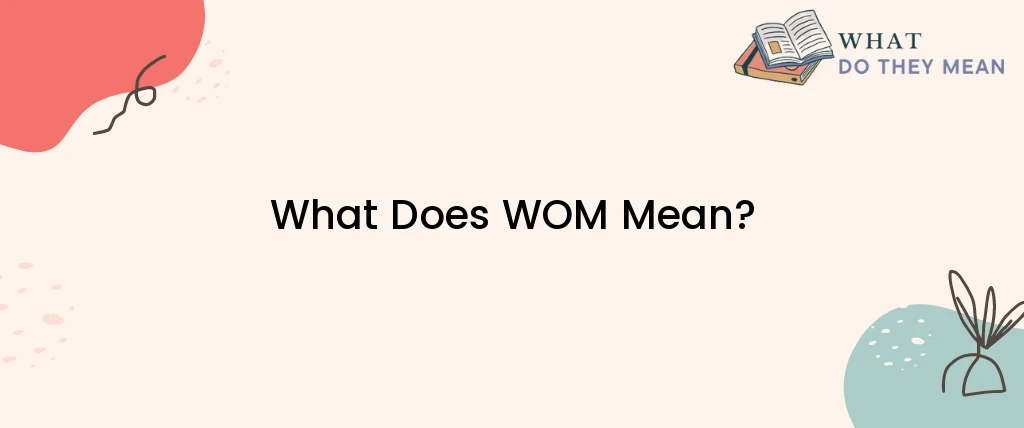WOM stands for Word of Mouth. It refers to the act of spreading information or recommendations about a product, service, or brand through personal conversations, social media posts, online reviews, or other forms of informal communication between individuals. Word of Mouth marketing is a powerful tool for businesses as it can significantly impact consumer purchase decisions and brand reputation.
Types of WOM
There are two types of WOM: positive and negative. Positive WOM occurs when individuals share favorable opinions, experiences, or recommendations about a product or service with others. Negative WOM, on the other hand, occurs when individuals share negative opinions, experiences, or criticisms about a product or service with others.
Why is WOM important?
Word of mouth is important for several reasons. First, it is a cost-effective marketing strategy that can generate buzz and increase brand awareness without the need for expensive advertising campaigns. Second, it is a more credible and trustworthy form of information than traditional advertising, as people are more likely to trust the opinions of their friends and family than paid advertisements. Third, WOM can be a powerful tool for generating sales and driving customer loyalty.
Examples of WOM
There are many examples of WOM in action. One of the most famous examples is the case of Dropbox, a cloud storage company that grew from 100,000 to 4 million users in just 15 months thanks to its referral program. The referral program offered existing users free extra storage space for every new user they referred to Dropbox. This incentivized users to share Dropbox with their friends and family, leading to exponential growth through word of mouth.
Another example is the case of Tesla, a company that relies heavily on word of mouth to sell its electric cars. Tesla has a loyal and passionate customer base who often share their positive experiences with others, leading to a strong reputation for the brand.
How to generate positive WOM
Generating positive WOM is not always easy, but there are several strategies that can be effective. One strategy is to provide excellent customer service, as customers who have positive experiences are more likely to share them with others. Another strategy is to create a unique and memorable brand identity that people will want to talk about. Finally, offering incentives for referrals, such as discounts or free products, can also be effective in generating positive WOM.
How to handle negative WOM
Negative WOM can be damaging to a brand’s reputation, but there are ways to handle it effectively. The first step is to listen to the feedback and address any legitimate concerns or complaints. This can help to turn negative experiences into positive ones and show that the brand is committed to customer satisfaction. The second step is to respond publicly to negative feedback, acknowledging the issue and offering a solution. This can help to show that the brand takes customer feedback seriously and is willing to work to resolve any issues.
The impact of social media on WOM
Social media has had a significant impact on word-of-mouth marketing. Platforms like Facebook, Twitter, and Instagram have made it easier than ever for individuals to share their opinions and experiences with others. Social media also allows brands to connect with their customers and engage with them in real time, which can help to generate positive WOM and address negative feedback.
Conclusion
Word-of-mouth marketing is a powerful and effective strategy for generating buzz, increasing brand awareness, and driving sales. Positive WOM can be generated through excellent customer service, a unique brand identity, and incentives for referrals. Negative WOM can be addressed through active listening and public responses to feedback. Social media has had a significant impact on WOM, providing new opportunities for brands to connect with their customers and leverage the power of word-of-mouth marketing. By understanding the importance of WOM and implementing strategies to generate positive feedback while effectively handling negative feedback, businesses can leverage this powerful marketing tool to their advantage and drive growth and success.

As a researcher, I am curious and driven by the pursuit of knowledge. I approach my work with a critical eye, carefully evaluating sources and methods to ensure that my findings are accurate and reliable. Whether delving into scientific studies, historical records, or cutting-edge technologies, I am always seeking to expand my understanding and make new discoveries. I am dedicated to uncovering new insights and finding solutions to complex problems, and am driven by a passion for uncovering the truth.


